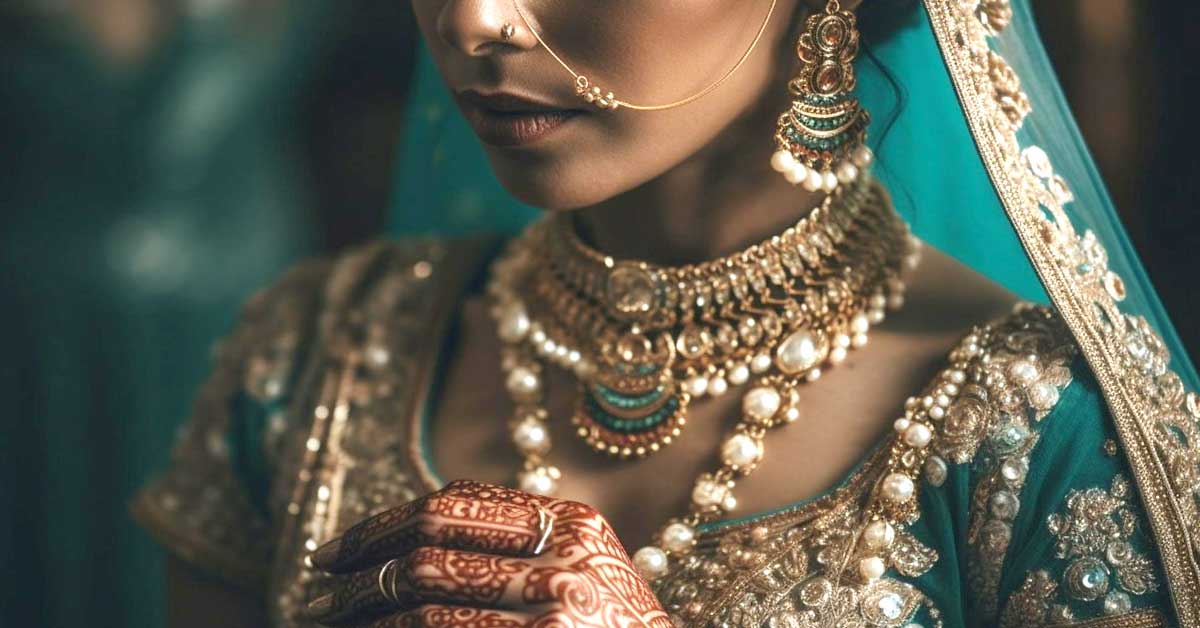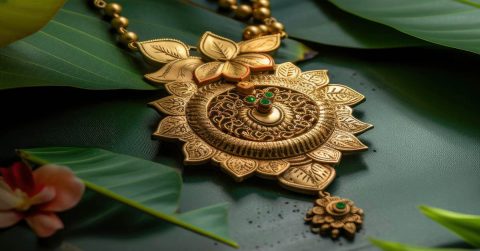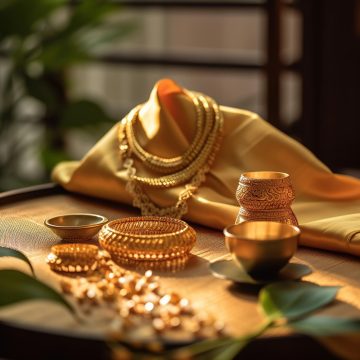Imagine yourself like a queen adorned with shimmering necklaces. Dazzling earrings and intricate headpieces. Each piece is a masterpiece crafted from precious metals and vibrant gemstones. The jewellery history dates back to Mediterranean around 3,000 to 400 BC. Whispered tales of her power, heritage, and even personal story. This captivating ritual of adorning oneself with jewelry transcends mere embellishment. It’s a testament to history as rich and multifaceted as the gems.

Delve a captivating exploration of history of jewellery with us. A narrative that stretches across continents and cultures. We’ll uncover the ingenuity of early jewellery making. The cultural significance is imbued in different jewellery types. And the evolution of jewellery design through the ages. From the gemstones in India to the meaning behind each exquisite piece. Prepare to be dazzled by the stories woven into the jewelry fabric.
A Timeless Tale: A Journey Through Eras
Unveiling a dazzling saga. Embarking on a journey through time, exploring the captivating Jewellery history.
The Earliest Sparkles: The Indus Valley Civilization (3300 BC)
Our journey begins in the cradle of civilization, the Indus Valley. Around 3300 BC, we find the earliest evidence of jewellery making. Skilled artisans meticulously craft ornaments. Trendy, readily available materials like shells, stones, and beads.
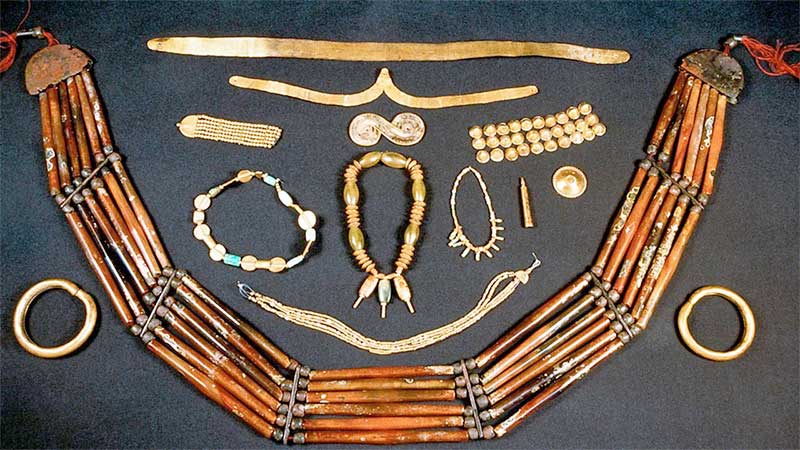
These early jewellery types showcase remarkable ingenuity. Skilled craftsmanship like drilling and polishing are employed to create simple yet captivating pieces.
Global Adornment: A Glimpse into Ancient Civilizations (1000 BC – 5th Century AD)
Fast forward a few millennia and Jewellery has become a ubiquitous feature across the globe. Jewellery served as adornment in the ancient civilizations of Egypt, Greece, and Rome. It was a marker of social status and religious beliefs. Egyptian Jewellery is often crafted from gold and adorned with intricate hieroglyphs. Reflected the wearer’s connection to the divine. Greek Jewellery preferred delicate forms and geometric patterns. At the same time, the Romans favoured bold and statement pieces. Interestingly, India emerged as a significant source of gemstones during this period. Diamonds are found and prized for their brilliance.
The Mughal Marvel: Exquisite Craftsmanship of a Golden Era (16th-19th Century)
The arrival of the Mughal Empire in the 16th Century ushered in a new era of jewellery making in India. The Mughals were renowned for nurturing the creative arts. They introduced exquisite jewellery craftsmanship. Techniques like Kundan and Meenakari brought India into the spotlight. India is renowned globally for the creation of the breathtaking Taj Mahal Emerald. A hexagonal emerald meticulously carved with floral designs. Echoing the architectural motifs of the Taj Mahal itself.
A Tapestry of Regional Traditions: Celebrating India’s Diverse Heritage (18th Century – Present)
The flourishing regional jewellery styles beautifully reflect India’s rich cultural tapestry. These unique masterpieces have emerged over centuries.Jadau, a popular technique from Rajasthan, involves setting gemstones in intricate gold frameworks. South India boasts of temple jewellery, characterized by its grandeur and religious symbolism. These diverse jewellery types not only serve as stunning adornments. But also pay homage to each region’s artistic heritage and local craftsmanship.
A Spark of Status: Jewellery as a Social Marker
The Jewellery history has transcended its role as mere adornment. It has served as a powerful symbol of social status and cultural identity.
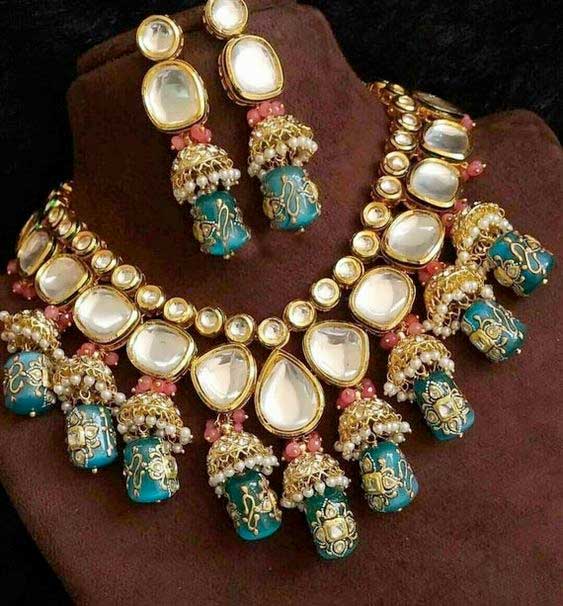
The type, quantity, and gemstones in Indiaan individual wears reflect their social standing. Elaborate gold jewellery pieces were often reserved for royalty and nobility. The common folk wore simpler designs. Jewellery also played a significant role in cultural ceremonies and celebrations. Visualizing belonging to a particular community.
A Language of Symbols: Decoding the Hidden Meanings
Beyond its social significance, Indian Jewellery has symbolic meanings across various regions. People choose gemstones in India for their perceived properties and associations. Diamonds, for instance, symbolized strength and eternity, while rubies represented passion and vitality. Metals, too, held symbolic value. In some cultures, gold associates with wealth, prosperity, and even divinity. Understanding these symbolic associations allows us to appreciate the more profound meaning. The jewellery meaning that is weaves into each piece.
A Legacy of Love: Jewellery as Heirlooms
Jewellery designs often transcends generations, becoming cherished heirlooms passed down through families. These treasures hold intrinsic value and carry the weight of memories and stories. A simple pendant inherited from a grandmother or a ring gifted by a loved one. Types of jewellery becomes more than just an ornament. And transforms into a tangible reminder. An emotional connection that binds families together.
Conclusion
Ingenious creations of the Indus Valley civilization to the exquisite craftsmanship of the Mughals. The Jewellery history has served as a captivating narrative. Reflecting the cultural significance, heritage and artistic evolution of humanity. Each piece of Indian Jewelley imbibes symbolism. And they are often passed down as heirlooms. Whispers tales of the wearer’s history and personal journey.
About Us
At Harit Jewellers, we curate a collection inspired by this timeless legacy. We invite you to explore our exquisite Jewellery. Timeless design meets the rich heritage of craftsmanship. Discover pieces that resonate with your individuality and weave your own captivating story.
- Explore more on Instagram: [Link]
- Discover on Facebook: [Link]
- Watch on YouTube: [Link]




